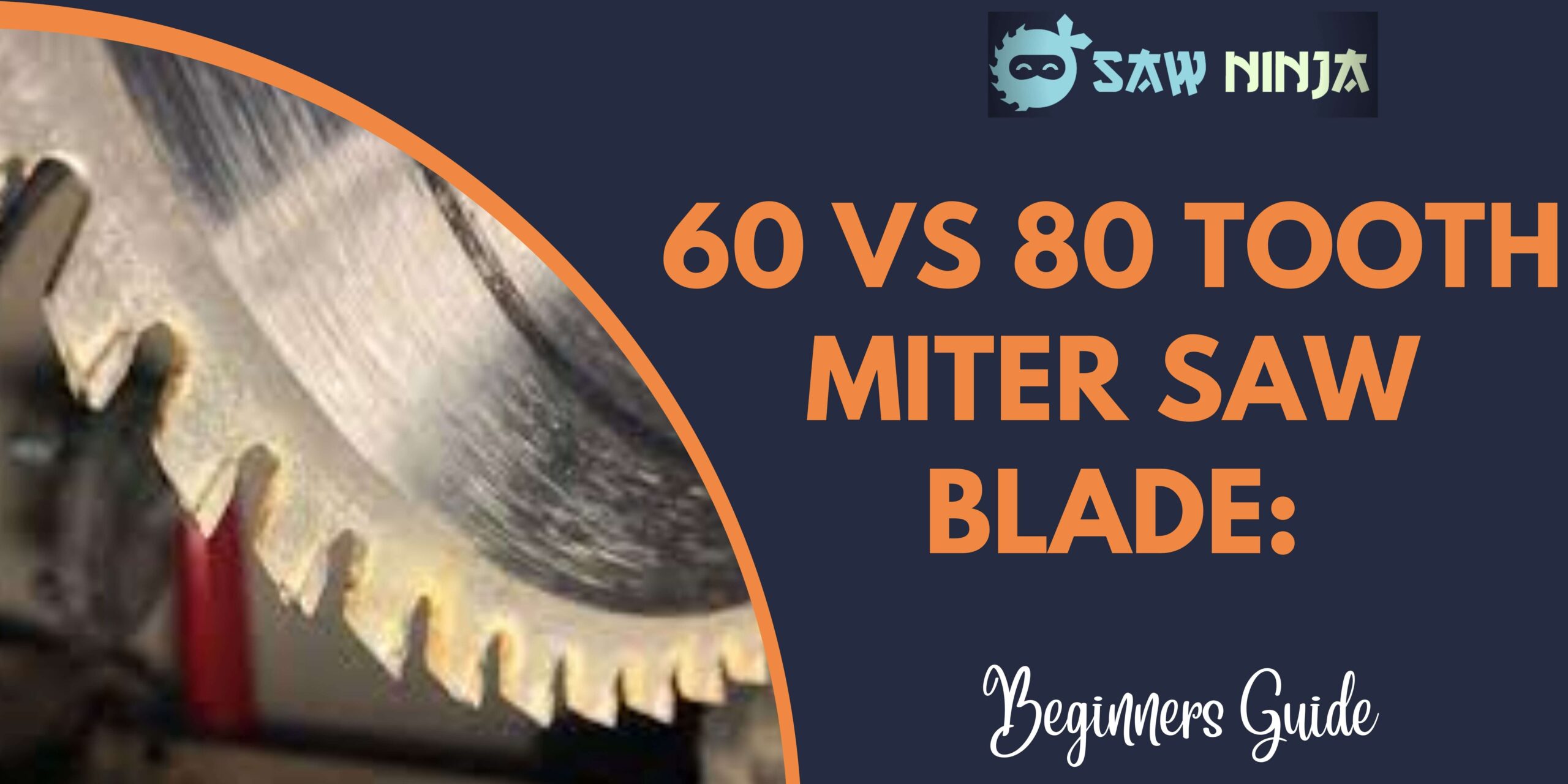Choosing the right miter saw blade is important for ensuring clean, accurate cuts. When choosing a blade, there are a few factors to consider, such as the thickness of the material you will be cutting and the type of saw you have.
Most miter saws come with a 60-tooth blade, but an 80-tooth blade can provide smoother cuts in thicker materials. If you are cutting crown molding or other delicate trim work, a 60-tooth blade is recommended.
An 80-tooth blade will provide faster results with less tear-out for general purpose cutting. When making your choice, be sure to consult your saw’s instruction manual to ensure that the replacement blades you choose are compatible with your model.
For a detailed comparison, keep reading!
The Main Difference: 60 Vs 80 Tooth Miter Saw Blade
The main difference between a 60 tooth and an 80 tooth miter saw blade is the number of cutting edges per inch. A 60 tooth blade has 6 cutting edges per inch, while an 80 tooth blade has 8 edges per inch. This makes the 80 tooth blade better suited for thicker materials, as it can make more cuts in a given amount of time.
The increased cutting edges also result in a smoother cut on thicker materials. This is because each tooth is only responsible for removing a small amount of material, so the blade can make cleaner cuts without leaving as much tear-out.
Another difference between these two types of blades is the kerf or width of the cut. A 60 tooth blade has a wider kerf than an 80 tooth blade, meaning more material is removed with each cut. This can lead to slower cuts and more waste material.
If you are looking for a general-purpose miter saw blade that can handle a variety of materials, an 80 tooth blade is the best option. It will provide faster results with less tear-out.
>>> What Size Miter Saw do I Need?
If you are cutting thinner materials or delicate trim work, a 60 tooth blade is better. Be sure to consult your saw’s instruction manual to ensure compatibility before making your purchase.
60 Vs 80 Tooth Miter Saw Blade (Benefits Comparison)
There are pros and cons to both when it comes to 60 vs. 80 tooth miter saw blades. A 60 tooth blade is great for making quick, clean cuts, while an 80 tooth blade is ideal for smoother and more precise cuts.
If you’re looking for a blade that can quickly make clean cuts, go with a 60 tooth blade. If you need a blade that can make more precise cuts, go with an 80 tooth blade.
Here are some things to keep in mind when choosing a 60 or 80 tooth miter saw blade:
- A 60 tooth blade is best for making quick, clean cuts in softwoods and plywood.
- An 80 tooth blade is better for making smooth, precise cuts in hardwoods and aluminum.
- You can use both blades for cutting baseboards, trim, and molding.
- A 60 tooth blade will leave a rougher edge on your workpiece, while an 80 tooth blade will leave a smoother edge.
Ultimately, the choice between a 60 vs. 80 tooth miter saw blade comes down to personal preference and the specific needs of your project. If you’re not sure which blade to choose, ask an expert at your local hardware store for advice.
FAQs
Is it better to have more teeth on a Mitre saw blade?
Having more teeth on a Mitre saw blade means more cutting edges per inch. This makes the blade better suited for thicker materials, as it can make more cuts in a given amount of time. The increased cutting edges also result in a smoother cut on thicker materials.
What is a 60 tooth saw blade used for?
A 60 tooth saw blade is best for making quick, clean cuts in softwoods and plywood. You can also use it for cutting baseboards, trim, and molding.
What is an 80 tooth saw blade used for?
An 80 tooth saw blade is better for making smooth, precise cuts in hardwoods and aluminum. You can also use it for cutting baseboards, trim, and molding.
How many teeth should I use for trimming?
For trimming, you should use a 60 tooth saw blade. This will provide quick, clean cuts with minimal tear-out.
Summary
In conclusion, a 60 tooth blade is better suited for thin materials, while an 80 tooth blade is better for thicker materials. The increased number of cutting edges on the 80 tooth blade results in cleaner, smoother cuts.
Also, the 60 tooth blade has a wider kerf, meaning more material is removed with each cut. This can lead to slower cuts and more waste material. If you are looking for a general-purpose miter saw blade, an 80 tooth blade is the best choice. I hope this article has helped you understand the difference between 60 vs 80 tooth miter saw blades.
